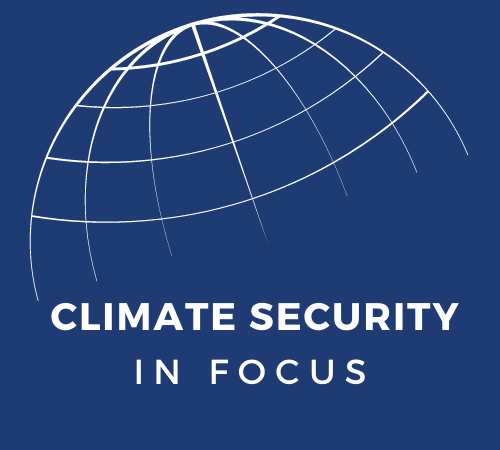
Food Security and Conflict
While climate change does not directly cause conflict, it has long been aptly referred to as a threat multiplier. The Intergovernmental Panel on Climate Change (IPCC) has underscored that food security will increasingly be impacted by climate change via rising temperatures, changing precipitation patterns, and more frequent and extreme weather events, which could potentially lead to increased competition and conflict over food production and resources, like land and water. No country, community, or individual is immune from climate impacts, but societies with weak institutions are at greater risks from climate induced instability as well as internal and external conflict. Already fragile systems can be crippled by environmental changes which can result in a myriad of compounding crisis, including food insecurity.
Russia’s war in Ukraine has demonstrated the interconnectedness of the global food supply chain, but there are many other factors that influence food security. Food (in)security can be determined by a variety of factors, such as high food prices or difficulty accessing food, and can be complicated by structural vulnerabilities like inequality or poor governance. Other drivers include resource scarcity, land use, high population growth, and migration. Governments that have weak institutions and/or societies with ingrained or extreme inequalities already face grievances that can be intensified by price and availability of necessities, like food.
Vulnerable governments with weak institutions share several common characteristics, including having an agrarian economy that is heavily dependent on agricultural production and resource extraction. A lack of sophisticated agricultural technology, such as heavy machinery and efficient fertilizers, make economic growth more difficult and can leave these countries in a constant state of vulnerability to the effects of climatic variation. As climate change worsens, these effects intensify—the frequency and intensity of extreme weather events like droughts, floods, cyclones, erratic rainfall, and a changing climate that can introduce new pests or proliferate their numbers. Poorer countries are disproportionately at increased risk of climatic variation given both their geography and their relative incapacity to build food security resilience. As such, global food (in)security and potential conflict and unrest multiplies.
Similarly, while food security can drive conflict, it can also be a result of conflict – as is seen in the Lake Chad basin and the Central Sahel. Africa remains the geographic area most affected by food crisis, which has resulted increased attention both in the region and food security writ large. The African Union has declared 2022 the Year of Food Security and Nutrition, and there are several global initiatives underway to address issues related to food. In July 2022, Catherine Russell, an Executive Director at the United Nations International Children’s Emergency Fund (UNICEF), highlighted growing global food insecurity and emphasized the need for immediate food assistance to prevent children from wasting away. The U.S. has consistently played a pivotal role in addressing the growing crisis and has been instrumental in scaling-up food assistance programs. The global need for food assistance effort was illustrated by the G7’s announcement in June 2022 of $4.5bn in aid to end food insecurity globally, half of which will be covered by the U.S. Additionally, Samantha Power, the Administrator for the U.S. Agency for International Development (USAID), highlighted that USAID is committing an additional $1.3bn to help Somalia, Kenya, and Ethiopia with immediate food and cash assistance to minimize the ongoing risks associated with the food crisis in these countries. These efforts are not simply about access or nutrition – it is also a conflict mitigation measure. Whether its USAIDs Food for Peace program or additional funding from The World Bank, there are a myriad of activities with dual goals of providing direct food assistance and enhancing food security.
According to the U.S. Department of Agriculture (USDA), “climate change is likely to diminish continued progress on global food security through production disruptions that lead to local availability limitations and price increases.” Major breadbaskets, like India, are already seeing reduced crop yield and higher prices, and Multiple Breadbasket Failures (MBBF) has become a growing concern for the international community. Between COVID-19 and increasing impacts of climate change, food security will remain a key public policy area for many years to come.
Climate Security in Focus is a blog series dedicated to exploring key elements of climate security that impact American interests both at home and abroad. The series aims to examine specific aspects of climate security issues in order to better understand climate policy challenges, facilitate conversation, and generate ideas.





